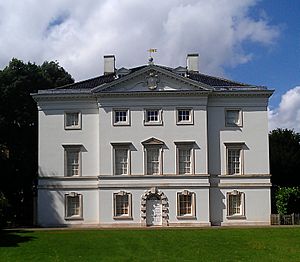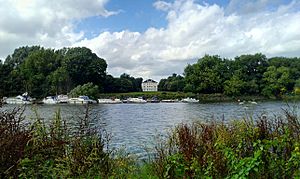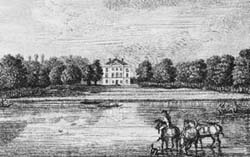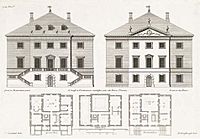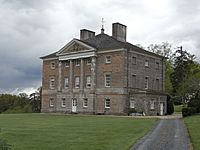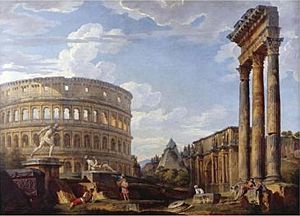Marble Hill House facts for kids
Quick facts for kids Marble Hill House |
|
|---|---|
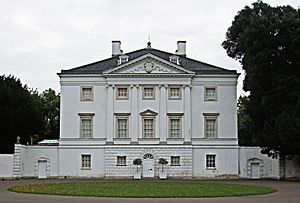
North (town) front, with pilasters
|
|
| Type | Villa |
| Location | Twickenham |
| OS grid reference | TQ 17296 73627 |
| Area | Richmond upon Thames |
| Built | 1724–1729 |
| Architect | Roger Morris |
| Architectural style(s) | Neo-Palladian |
| Owner | Historic England |
|
Listed Building – Grade I
|
|
| Official name: Marble Hill House | |
| Designated | 2 September 1952 |
| Reference no. | 1285673 |
| Lua error in Module:Location_map at line 420: attempt to index field 'wikibase' (a nil value). | |
Marble Hill House is a beautiful old house in Twickenham, London. It was built between 1724 and 1729. This grand home belonged to Henrietta Howard, Countess of Suffolk. She was an important lady who lived there until she passed away.
The house is designed in a style called Neo-Palladian. This means it was inspired by the ideas of an old Italian architect named Andrea Palladio. Marble Hill House became very famous for its design. It even became a model for other large homes built in England and America.
In 1903, the house and its land became open to the public. It was the first 18th-century house in England saved by a public group. Today, English Heritage looks after Marble Hill House.
Contents
Building Marble Hill House
Henrietta Howard built Marble Hill House between 1724 and 1729. She was a lady-in-waiting to Queen Caroline and a close friend of King George II. The main architect was Roger Morris. He worked with Henry Herbert, who was also an architect.
Lord Herbert based much of the design on an Italian villa called Villa Cornaro. This villa was built by Andrea Palladio in 1553. Marble Hill House has a special "Great Room" on the first floor. This room is very grand, with fancy gold decorations. It also has five unique paintings by Giovanni Paolo Pannini.
The house is set in a large park that is about 66 acres (2.67 square kilometers). This park is now known as Marble Hill Park. Inside the house, you can see old furniture and paintings from the Georgian era. There is also a collection of Chinese-inspired art called Chinoiserie.
Famous Visitors and Influence
Marble Hill House was a popular place for famous people to visit. Writers like Alexander Pope and Jonathan Swift were often guests. They enjoyed spending time with Henrietta Howard at her home.
Later, in the late 1700s, the Prince Regent rented the house. He later became King George IV. He used Marble Hill House to meet with his friend, Maria Fitzherbert, in private.
The design of Marble Hill House became very well-known. People admired its simple yet grand style. Many other villas built in England copied its design. An early example is New Place in Devon, built between 1746 and 1749.
Marble Hill Park and Restoration
Marble Hill House is now owned by English Heritage. They took over its care in 1986. The large grounds around the house are called Marble Hill Park. This park offers many fun things to do. You can find rugby and hockey fields, a cricket pitch, tennis courts, and a children's play area.
In 2015, English Heritage received a special grant to improve Marble Hill House and its park. This project aimed to make the house look even better. It also improved the park's facilities for visitors.
The restoration work on the house was completed in 2022. It took seven years and cost £8 million. The project brought back the original Georgian colors and fixed up the furniture and paintings. The head of English Heritage, Kate Mavor, called the restored house "one of the forgotten gems of Georgian London."
See also
- Marble Hill Park
- Yelverton Lodge – another historic building nearby


